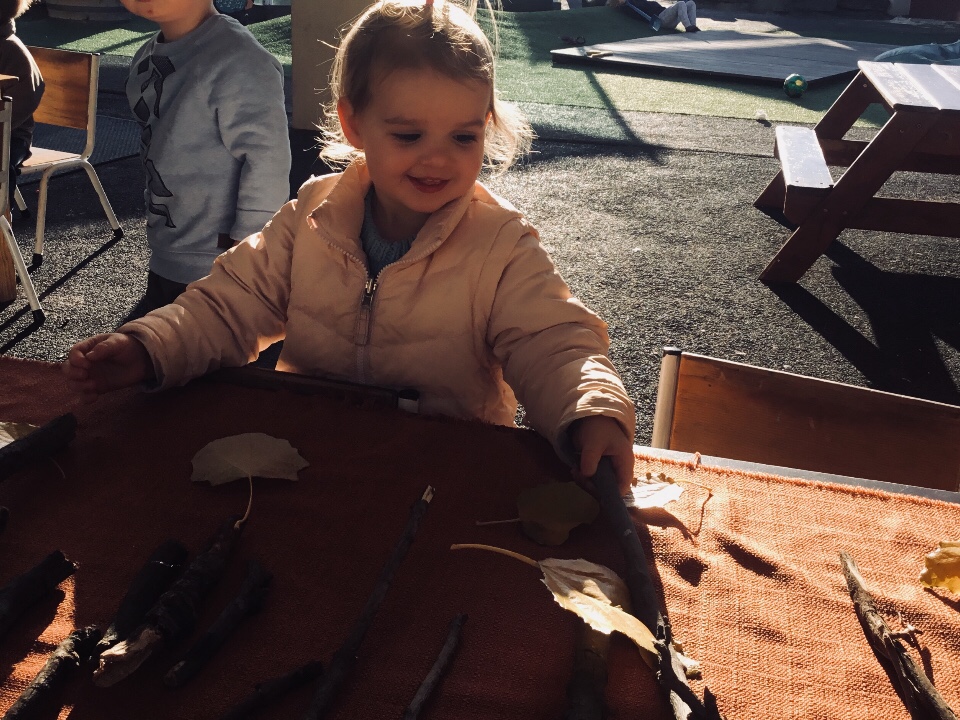Estimating length: Differentiating with mathematics
- Sophia Vidovic White
- Feb 24, 2019
- 3 min read
Tuesday 5th June 2018
Our June Intentional teaching objective is for our children to learn the concept of mathematics through play and discovery. We found natural items within our environment to challenge our children to understand the concept of measurement. We wanted to explain the number of units and the relative size of those units. We believe that children need considerable exposure to different units of measure to comprehend this inverse relationship.
The aim was to capture an initial perspective on children's thinking and prior learning, a benchmark with which we can compare later on in the month. Today we asked the children to sort the various lengths of sticks and to categorise these. The children took turns to put a stick down on the cloth. The challenge was to make the line of sticks increase in size. We attempted to encourage the children to compare the lengths of two (or more) objects using the language associated with measuring length such as shorter, taller, tallest, shortest, etc. Our children had the opportunity to compare objects directly by placing one object against another to determine which is longer.
This activity was effective as being in a small group, consolidates the learning completed during our session. We had the opportunity to enhance peer to peer learning in a hands on context.
The learning opportunities made available involve:
+ The use of suitable language associated with measurement attributes such as shorter, shortest, longer, longest, tall, taller and tallest.
+ Measurement in comparing objects directly by placing one object against another to determine which is longer, taller, shorter.
+ Problem solving and overcoming challenges
+ Developing emerging mathematical ideas through a variety of learning modalities and preferences
+ Provide a variety of ways in which children can demonstrate their understanding of mathematical concepts and acquisition of mathematical skills.
This activity was deceptively challenging for educators as we found some sticks were exactly the same length but different widths. This lead to quite a bit of decision making by the group as to the order of sticks. Ava and Sophie argued about which stick was longer. “This one is bigger.” Ava argued as she used her hands to straighten the sticks and aline these next to one another. “Look..bigger.” Said Ava “This is bigger.” Argued Sophie as she moved the stick to the other side of the table. “Maybe the stick is longer…is this stick taller…long?” Asked Jiin. “Hold these up high next to each other…can you see better?” Prompted Jiin. “Two long.” Said Charlie as he was attempting to describe that they were the same length. Hazel engaged in solitary play and sat as she placed the small sticks into a pile. “Baby one. Little.” Said Hazel. Gus enjoyed moving the sticks across the table and would rearrange the sticks. He was more concerned with the smaller sticks as he found they were much easier to sort.
Ava commented that curved sticks when straightened, become longer. We can observe that the children can come up with their own ideas about length. Simple ideas that use gathered materials which naturally generate focused discussion that leads to a deeper understanding of concepts. Not all attempts to differentiate were successful, but we will keep differentiation in mind as we plan and reflect on our mathematics instruction as it can transform teaching in important ways.
It reminds us of the constant need to fine tune, adjust, redirect, and evaluate learning in our room. Through this exercise we can identify the mathematical skills and abilities that children should gain and connect them to ‘big ideas’.
To evolve further learning we will attempt to challenge children with other ways of taking measurements of length. This may involve using string and conventional measuring objects such as rulers and tape measure to then record our findings and open up discussion.




























Comments